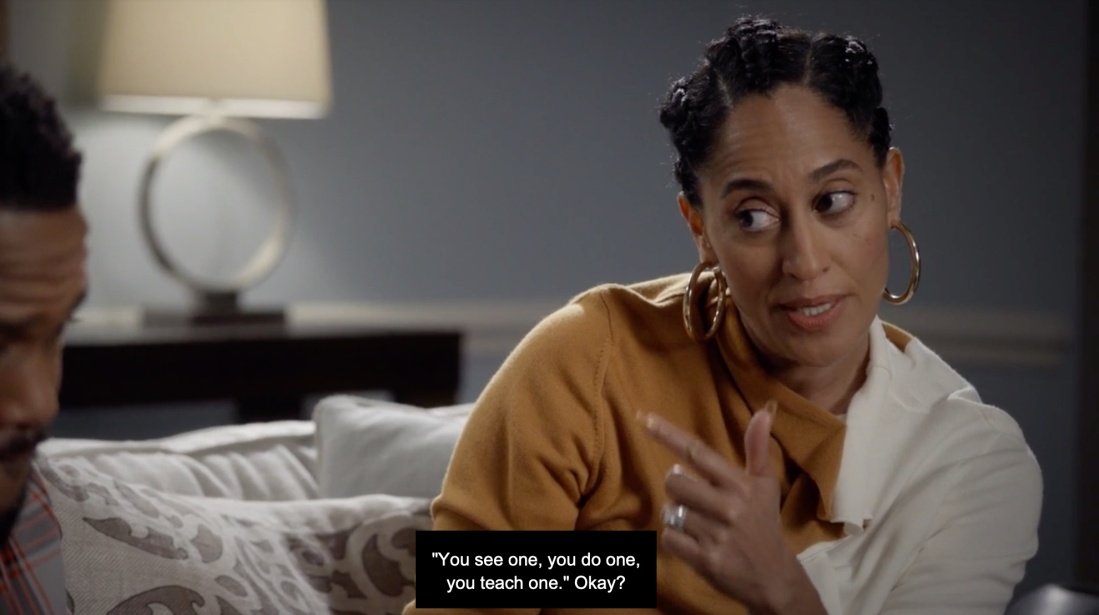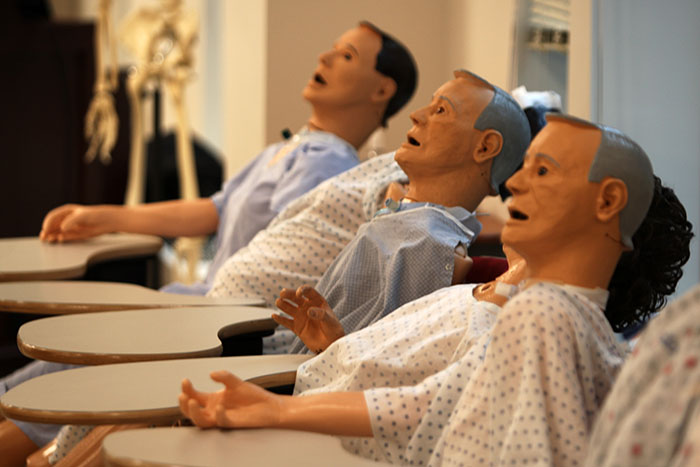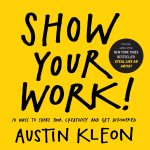
Let’s say you’re newly hired at a clinic as a nurse or doctor? Not every hospital or clinic has the same approach to care, so how will you get up to speed?

In the ABC TV show Blackish, Dr. Rainbow Johnson says: “Mentoring, Dre. It’s about bringing along the next generation. In the medical field, we have a little saying, ‘You see one, you do one, you teach one.’ Okay?!”
Your clinic will also use the “See One, Do One, Teach One” approach:
As a learner, you will watch your supervisor or another proficient peer perform a technique.
Later you’ll perform that same technique with minimal supervision.
And then after you successfully and repeatedly master the skill you’ll teach others that same technique.
As an experience, “See One, Do One, Teach One” seems fast and friendly.
Even though I saw this happen at the clinics where I worked, I didn’t know the concept had a name until I attended a meeting at a nearby community health center. New providers are paired with experienced providers so that they can learn this health center’s approach.
“See One, Do One, Teach One” is great when you’re bringing a novice up to speed with new, frequent, “do-able” techniques.
Even experienced professionals have something to learn from this approach.
Also, if you enjoy learning by doing, it’s practical: you get to roll up your sleeves, do something, and receive immediate feedback. If you experience haphazard Annual Performance Reviews, you also crave observable, real-time feedback.
However, “See One, Do One, Teach One” doesn’t work as well for knowledge workers or solo practitioners like me, especially if we’re part of a remote team, or the only person with our job.
Do you have questions, like I do?
Who do I shadow? Even though my coworkers meet monthly virtually to reflect on scenarios and opportunities for feedback in the future.
Which tasks are frequent enough to practice? Especially since my work is unique, interpersonal, and facilitative.
Even more questions remain: How do I get real-time feedback? Is it appropriate to video record collaborative coalition meetings for coaching? Should I turn on voice memos during one-on-one fundraising visits? How can I gain “muscle memory” for novel, one-time activities?
Even within the medical field, there’s a growing opinion that “See One, Do One, Teach One” is too risky for both the patient while provider tries their hand at new medical practices for rare conditions.
Some young health care providers and tech professionals predictably suggest embracing Virtual Reality (VR) or Augmented Reality (AR) simulations as the 21st-century approach to this dilemma.
Ok. Cool story bro.

As someone close to health care, I see how tech-heavy approaches like telemedicine and remote surgery are helpful for patients far from major hospitals. However, they’re expensive, unproven, and obsolete by the time they’re cheaper or tested.

Many nursing and medical schools are using fancy “dummies”—similar to how you learn CPR. This is valuable, because students get to actively learn standard techniques without harming a patient.
But if you aren’t a pilot, nurse, doctor, artist, or tradesperson, how can you achieve mastery in unique circumstances?
For almost a century, many management and law schools teach with case studies.
Case Teaching is for when there is no right answer.

Remember in The Matrix, how Neo learned kung fu in a simulation?
Case studies are like mental simulations. Or “management fiction” that increases empathy. Much like in the medical world, a downside to case teaching is that they have limited value outside well-trodden scenarios or with unique techniques. Additionally, they can take months to research and months to prepare for use in a learning environment.
So how can remote workers like you and I learn better? How do you create your own personal learning environment?
Austin Kleon says “showing your work”* is the best solution many solo practitioners like myself have outside of classrooms or VR simulations. We get the benefit of reflective practice. You can reflect on dilemmas, seek outside perspective, and document your learning for the future. This article is an example of doing just that!
Three key elements of an effective reflective practice for personal learning are:
- Journal or regularly document your challenges or dilemmas.
- Show Your Work or share how you think with others.
- Seek and be open to immediate feedback from your peers, coaches, or trusted advisors.
This regular reflective practice, will create mental muscle memory to move your learning from your head, into your body, and ultimately, into the world.
Like this? Consider Take What Works, my free weekly newsletter where I deconstruct learning strategies like this and share my personal learning experiments. Join here.
*When I link to books at Amazon, I use their affiliate links. This helps me stay caffeinated and productive writing essays like this.
